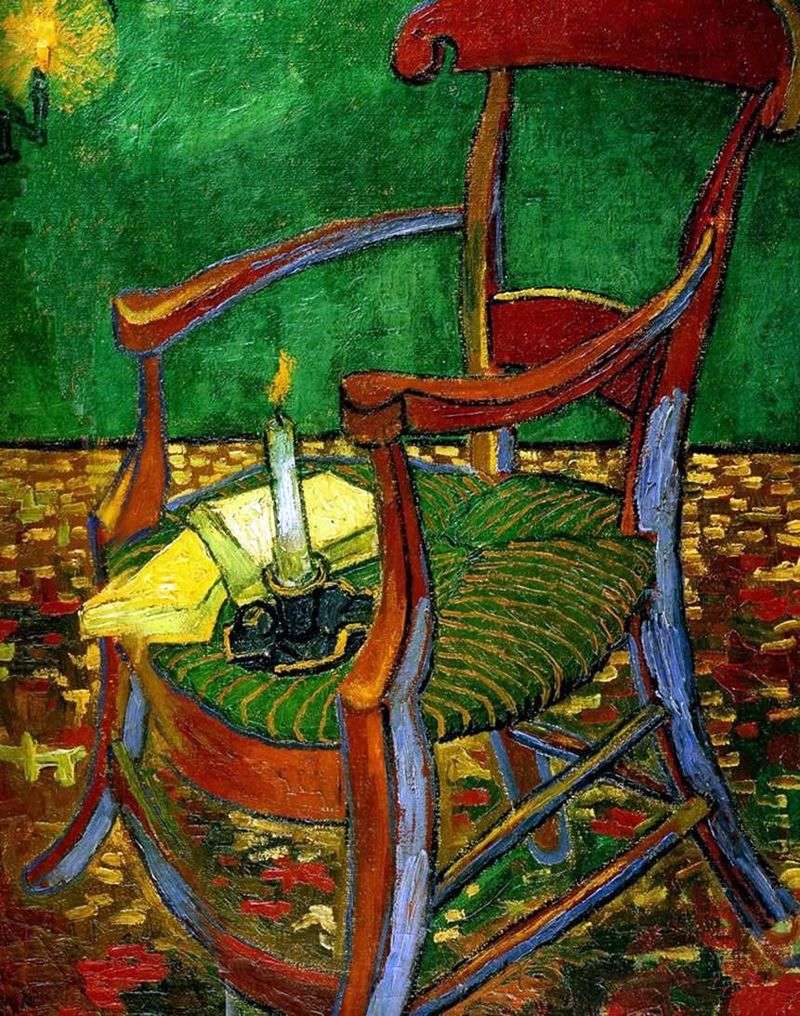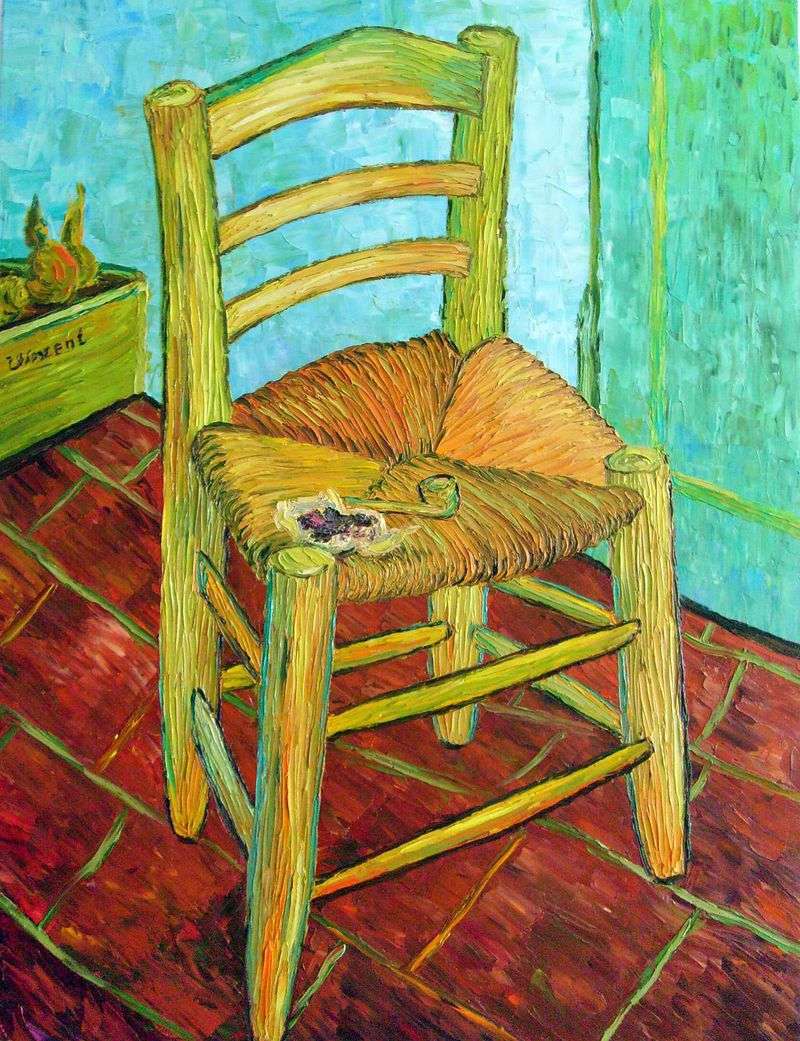
For Vincent Van Gogh, Paul Gauguin was not just an artistic colleague, but a close friend, he had high hopes for cooperation with. However, soon after Gauguin’s arrival in Arles in November 1888, a violent quarrel broke out between the artist friends, and their communication ceased. Gauguin left the hospitable “Yellow House” of Van Gogh, leaving behind him only an empty chair.
Empty chair in the center of the room. Absence of a person who once held it. The bitterness of the loss of a close friend and the collapse of dreams associated with it. In this atmosphere Van Gogh created the canvas “Gauguin’s Chair”. A little later, it was written supplement – the painting “Vincent van Gogh’s chair with a pipe.” The works became the prototypes of two artists, reflecting the dissimilarity of their character, their views on life and art, the different paths of destinies.
The chair is the main character, occupying the entire space of the picture. Made by the hands of a skilled craftsman, with books and a candle on the seat, he, in his own way, embodies the ambition of Gauguin and his rich knowledge. The main colors of the painting – red and green – are chosen by Van Gogh not by chance. More precisely and deeper than other tones, they were able to convey the lost illusions and darkness into which the artist plunged with the departure of Gauguin. In a tandem of two contrasting moods, the painting “The Gauguin’s Chair” looks more gloomy, and the artist does not see any glimmer of light in it, as in his life situation. Inanimate by its nature, the object of the interior symbolizes something alive, but gone.
This is the trace of a person left in the material world, a place where this person is no more and, perhaps, never will be.
 Vincent’s chair and his smoking pipe (Vincent’s chair with a pipe) by Vincent Van Gogh
Vincent’s chair and his smoking pipe (Vincent’s chair with a pipe) by Vincent Van Gogh Vincent’s chair with his pipe by Vincent Van Gogh
Vincent’s chair with his pipe by Vincent Van Gogh Van Gogh paints sunflowers (Portrait of Vincent Van Gogh) by Paul Gauguin
Van Gogh paints sunflowers (Portrait of Vincent Van Gogh) by Paul Gauguin Still Life with Sunflowers on the Chair by Paul Gauguin
Still Life with Sunflowers on the Chair by Paul Gauguin On the threshold of eternity by Vincent Van Gogh
On the threshold of eternity by Vincent Van Gogh Still life with a bow and a drawing board by Vincent Van Gogh
Still life with a bow and a drawing board by Vincent Van Gogh Self-portrait with bandaged ear and pipe by Vincent Van Gogh
Self-portrait with bandaged ear and pipe by Vincent Van Gogh Les Alyscamps by Vincent Van Gogh
Les Alyscamps by Vincent Van Gogh